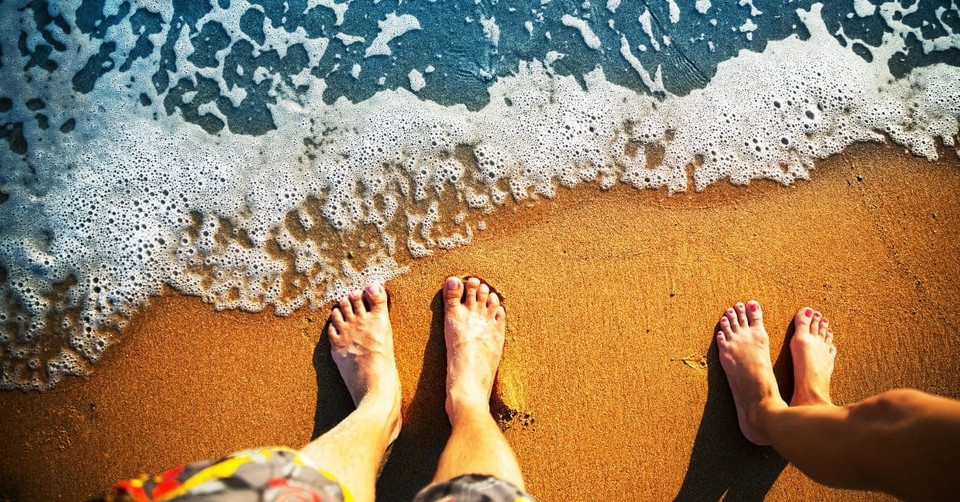7 Ways to Enjoy What's Left of Summer

Summer is winding down, and while some homeschooling families have already cracked open the books for another school year, others have a few more weeks of summer break. Some homeschoolers reject the idea of an extended summer break from school, while others look forward to it. They enjoy the opportunity to pause their children’s formal education and rest, relax, and play. But are summer breaks and learning mutually exclusive? Not necessarily. With a little forethought and planning, summer can be a wonderful opportunity for learning and adventure. If you’re among those who are enjoying a few more weeks of summer break, here are several reasons why the learning doesn’t have to stop:
1. The warmth of summer lends itself well to outdoor activities you can’t enjoy during the school year.
2. The relaxed schedule allows time for fun reading, craft projects, and life skill training that often is squeezed out by traditional school assignments.
3. Many businesses experience slowdowns in the summer, affording a chance for Dad to take time off. This allows him to enjoy extended family time.
4. Most sports programs take a break in the summer, giving families more flexibility and freeing up valuable evening and weekend hours.
We all know in theory that children learn best when they experience the world around them, but we still tend to count as school days only those in which they complete written assignments in textbooks and workbooks. Homeschooling allows the freedom to log school days during the summer by planning and documenting non-classroom learning.
Here are a few ideas for easy, fun summer learning:
Take swimming lessons. Unless you have access to a gym year round, summer is often the only time children can learn this valuable skill. According to the Center for Disease Control, drowning is the second leading cause of unintentional injury and death for children ages 1 to 14 years, and the fifth leading cause of death for people of all ages. Signing them up for swim lessons at the local pool, YMCA, or city facility might one day save their lives. Also, unlike many sports, swimming is an activity your children can enjoy for a lifetime. It has great cardiovascular, aerobic, and weight-bearing benefits, is helpful for burning calories, and is a fun way to keep cool outdoors. A final benefit is that every hour they spend in the pool can count toward the physical education component of their homeschool year.
Go star gazing. Many climates are too cold to lie out on a blanket and study the stars during the school year. Even if you brave the cold to study the constellations, many are only visible in the summer sky.
Take your family to a field or high hill somewhat removed from light pollution and trees. Bring binoculars or a telescope if you have them, but most summer constellations are clearly visible to the naked eye if you know what you’re looking for. The American Association of Astronomers has a website full of diagrams of the summer night sky to help you learn your way around.
Lay out blankets, bring a snack if you’d like, and don’t forget the insect repellant. On a clear night you might be able to spot The Eagle (Aquila), The Northern Crown (Coronus Borealis), and The Flying Horse (Pegasus).
After you’ve spotted your favorite constellations, look for planets. Planets are discs that reflect the light of the sun, so they shine with a steady, less twinkly light than stars. If you want to jump from the scientific to the creative, begin a story about what you see in the sky (Once upon a time there was a boy who built a rocket ship and flew to the moon...) and invite each family member to add to the story.
Visit some of the historical places you studied during the school year. Reading about history, especially if you pair textbooks with historical fiction, is a great way to introduce the events that shaped our country. Visiting these places is a way to make the stories come alive.
One summer, after studying the events of the Civil War, we traveled to Charleston, South Carolina, and rode a ferry to Ft. Sumter, the site of the first shots of the war. Walking the perimeter of the fort, seeing the armory, and gazing out across Charleston Harbor through the cannon holes in the walls engaged my children’s imagination and cemented the details of this historical event.
Go to the beach. After you’ve built a sandcastle and played in the ocean, give your children a challenge. “See how many different types of shells you can find.” Later in the day, when it’s too hot to sit on the beach, glue the shells to poster board. Using a shell identification guide or an online site like Seashells.org, identify each type and label it.
This fun exercise teaches children to examine each shell carefully and notice the subtleties that distinguish one from another. The first year we did this, I learned the difference between a lightening whelk (the only left-handed whelk) and a channeled whelk. I learned there were Turkey Wings, Lion’s Paws, and Pen shells, and that the shellfish that lives in the Slipper shell begins life male and becomes female as it matures.
Many beaches, especially those in state or national parks, employ naturalists to present educational programs, lead hikes, and organize field trips. At Hunting Island, SC, our family learned how to fish for crabs off a dock, hiked the beach after dark looking for egg-laying Loggerhead turtles, and combed the beach for fossils under the expert tutelage of a state park naturalist.
Learn and practice life skills. Let’s face it, during the school year, it’s often all we can do to get dinner on the table. While we know it’s important to teach our children how to cook, sew, and make simple repairs, we often neglect this type of training because of time constraints. Summer is a great time to work on these valuable life skills.
Designate one day a week as Kids’ Cook Day. On this day, allow your children (with guidance and help) to select a menu, write a grocery list, and shop for and cook a meal. Even young children can do simple tasks like washing vegetables, stirring batter, and setting the table. Older ones can learn cooking terms and techniques, measurement, and nutritional principles.
Dad can teach simple auto maintenance skills such as how to check and change the oil in the car, make simple home repairs, and use and maintain basic lawn equipment.
Summer is also a great time to drag out the sewing machine. I’m not sure if traditional schools still teach Home Economics, but a few afternoons of home instruction can ensure that your sons and daughters know how to sew on a button, hem a pair of pants, or mend a hole in a torn seam.
Read. Most of the reading we and our children do during the school year is curriculum-driven. This allows little freedom to explore topics and areas of interest that fall outside these parameters. Maybe your daughter is fascinated with horses, but studied marine biology in science last year. Perhaps your son is an avid baseball fan and loves reading biographies about famous players. Hot summer afternoons when it’s too warm to play outside are great times to fill a box with books from the library and read.
Often times a school subject will awaken the interest of one of our children, but because of the need to move on, they are unable to explore the subject in depth. Summer is the chance to revisit the books they didn’t read. When my daughter was in sixth grade, we studied the French Revolution and read The Scarlet Pimpernel. She was so captivated by the story that she went on to read nine more volumes by the Baroness Orczy. From there, she spring boarded to reading books by revolutionary thinkers like Voltaire and Robespierre, eagerly devouring books I would have never assigned because of their complexity.
Because summer days are long, and children seldom voluntarily rest, we had a mandatory quiet hour every day. In the middle of the afternoon, when it was too hot to play outside, I required each child to spend an hour on her bed. The rules were simple – either read or sleep. Since they were well past napping age, they chose to read.
Although they sometimes grumbled about it, this hour gave them “permission” to stop and read, something my more active daughter might not have voluntarily chosen to do. It separated them for a time, which helped limit squabbles, and, as an added bonus, it gave me a break from mothering. Because the same rules applied to me, I also had permission to nap or read those books I’d been too busy to enjoy during the school year.
Because reading is unquestioningly an educational pursuit, document every hour your children spend reading and maintain a running list of the books they read. If you have high school aged children, attach that list to their English class course description.
Summer is a wonderful time to relax, play, and make memories. It continues to be one of our family’s favorite times of year. Even though my daughters are now young adults, we still plan activities together that involve learning new skills, visiting new places, and reading good books.
Because, after all, learning never stops.
Other Fun Summer Learning Adventures:
- Visit a Pick-Your-Own farm
- Join a summer reading club at the library
- Visit a historical place you studied about
- Learn to cook
- Go camping
- Explore a nearby town
- Learn to sew
- Do some of the things only tourists do in your city
- Invite a new family over for dinner
- Learn to make jelly
- Read “just for fun” books
This article originally appeared in The Mother’s Heart magazine, issue #76.
Lori Hatcher is a 17-year homeschooling veteran and the author of Joy in the Journey – Encouragement for Homeschooling Moms and the blog, Hungry for God; Starving for Time. A women’s ministry speaker, she enjoys walks with her dog, chocolate covered almonds, and sunshine. She and her husband live in Columbia, South Carolina.
Publication date: August 15, 2014
Originally published July 29, 2016.





